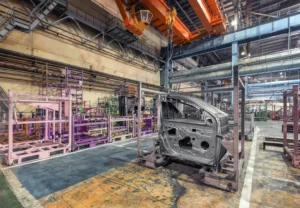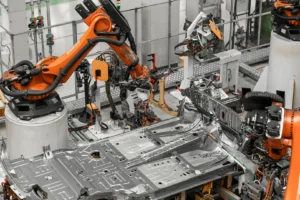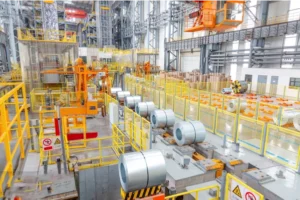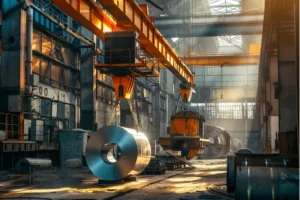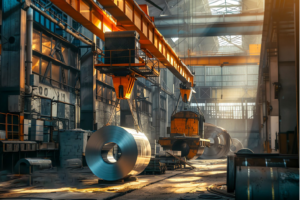Stainless Steel Coil and Sheet for Pressure Purpose: Contractor's Guide
Choosing materials for high-pressure jobs is critical. A wrong move leads to project failure, safety risks, and budget overruns, but stainless steel offers a proven, reliable solution.
Stainless steel coil and sheet are essential for pressure applications because their unique combination of high tensile strength, corrosion resistance, and versatility ensures project safety, operational efficiency, and long-term reliability. These materials are engineered to withstand demanding high-pressure and corrosive environments, making them a superior choice for contractors.
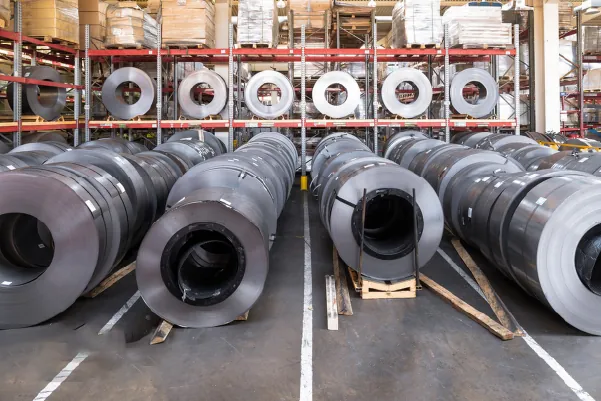
As someone who has spent years navigating the global stainless steel supply chain, I've seen firsthand how the right material choice can make or break a critical project. For contractors working on pressure applications—be it vessels, tanks, or complex piping systems—the stakes are incredibly high. It's not just about meeting a specification; it's about building systems that are safe, durable, and cost-effective over their entire lifecycle. Let's dive into why stainless steel is the cornerstone of modern pressure applications and how you, as a contractor, can leverage it for a competitive advantage.
What is the fundamental role of stainless steel coil and sheet in pressure applications?
Misunderstanding a material's core function is common. This can lead to improper specifications and, ultimately, catastrophic system failure, but stainless steel provides a clear and dependable function.
The fundamental role of stainless steel coil and sheet in pressure applications is to serve as a robust structural and containment barrier. It ensures the system's integrity, safety, and longevity by resisting high mechanical stress and preventing failure from corrosion, even in aggressive chemical environments.
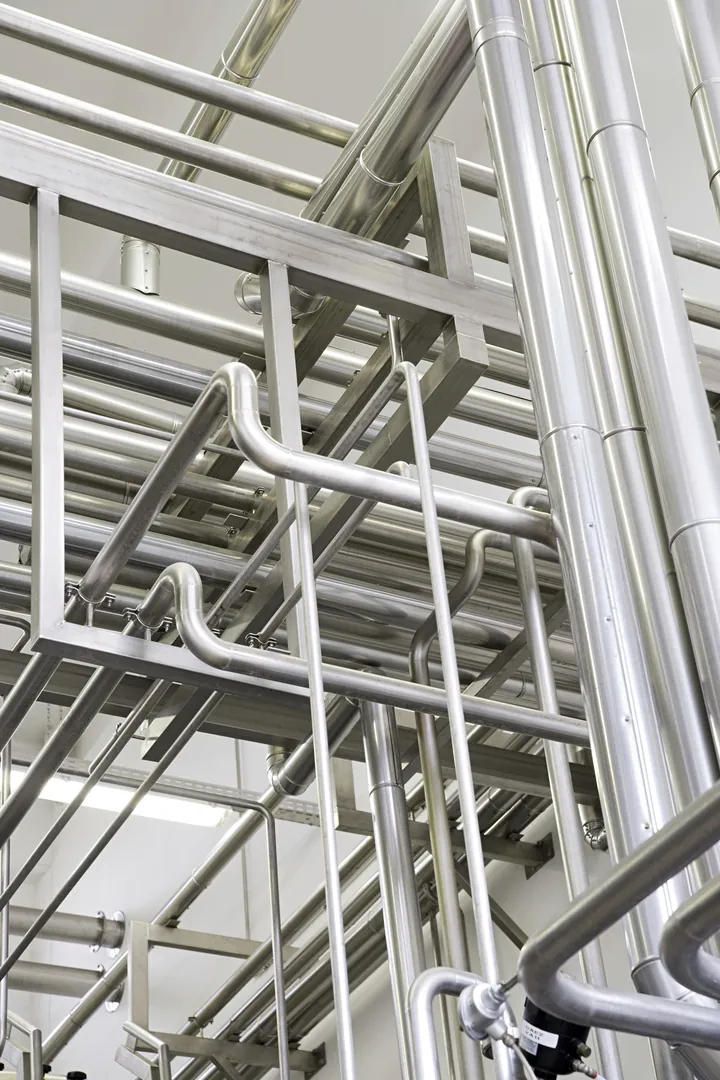
At MFY, we see stainless steel as more than just a commodity; it's an engineering solution. In pressure applications, its role is twofold: to provide mechanical strength and to act as a shield against corrosion. These two functions are deeply interconnected and are what make the material so indispensable for contractors.
The Dual Mandate: Strength and Resistance
The primary job of any material in a pressure system is to contain force without deforming or failing. Stainless steel excels here due to its high tensile strength. This property means it can handle significant internal and external pressures, which is fundamental for safety and regulatory compliance. But strength alone isn't enough. I remember a case with a client in the chemical processing industry whose carbon steel tanks were failing prematurely despite meeting strength requirements. The issue was internal corrosion, which weakened the structure over time. This is where stainless steel's second mandate—corrosion resistance—becomes critical. The passive chromium-oxide layer that forms on its surface self-repairs, providing continuous protection against a wide range of corrosive agents.
A Comparison of Common Grades
Not all stainless steel is created equal. The grade you choose must match the specific operational environment. For contractors, understanding the basics is key to making a cost-effective and safe choice.
| Grade | Key Characteristics | Typical Pressure Applications |
|---|---|---|
| 304L | Good corrosion resistance, excellent formability | Water treatment tanks, food processing vessels |
| 316L | Enhanced corrosion resistance (especially against chlorides) | Chemical processing, marine applications, pharma |
| Duplex 2205 | Very high strength, excellent stress corrosion cracking resistance | Oil & gas pipelines, heat exchangers |
Choosing the right grade from the outset prevents costly redesigns and ensures the asset's longevity, directly impacting your project's profitability and your company's reputation.
What are the current trends in using stainless steel for pressure purposes?
The materials industry is constantly evolving. If you fall behind on the latest trends, you risk losing your competitive edge and specifying outdated, less efficient solutions for your projects.
Current trends include the increasing use of high-strength duplex grades for lighter and more cost-effective designs, a strong demand for materials with complete digital traceability, and the adoption of advanced fabrication techniques to maximize performance and ensure compliance with stricter global standards.

The landscape for pressure applications is shifting. It's no longer just about the material's basic properties; it's about a holistic approach that incorporates efficiency, data, and advanced technology. At MFY, we are at the forefront of these changes, helping our partners adapt and thrive.
The Rise of Duplex Stainless Steel
One of the most significant trends I've observed is the move towards Duplex stainless steels like 2205. These grades offer a much higher strength-to-weight ratio compared to traditional austenitic grades like 304L or 316L. For a contractor, this means you can design pressure vessels with thinner walls, which reduces material costs, fabrication time, and transportation expenses. This is a clear example of how material innovation can directly improve a project's bottom line without compromising on safety or performance.
The Digital Thread: Traceability and Quality Assurance
Perhaps the most critical, non-obvious trend is the demand for digital transparency. Gone are the days of relying solely on a paper certificate. Today, clients and regulators demand a complete digital thread from the mill to the final installation. This means instant access to Material Test Reports (MTRs)[^1], heat numbers, and quality assurance data. I recently spoke with a contractor working on a major LNG project in Australia. He told me that their ability to provide instant, verifiable digital documentation from a supplier like MFY saved his team weeks of compliance paperwork and gave their client immense confidence. This is no longer a "nice-to-have"; it's a fundamental requirement for winning and executing high-value contracts.
What challenges do contractors face when selecting stainless steel materials?
Selecting the right stainless steel is not simple. Making the wrong choice can lead to significant budget overruns, project delays, and severe safety hazards that can damage your reputation.
Contractors face several key challenges: balancing the upfront material cost against long-term lifecycle value, ensuring grade authenticity and compliance with complex international standards (like ASME), managing supply chain volatility, and accurately specifying materials for unique and highly corrosive operational environments.

Every day, I talk to contractors around the world, and they consistently bring up the same set of challenges. These are not just technical hurdles; they are business risks that must be managed proactively. Success in this field depends on navigating these issues effectively.
The Cost vs. Lifecycle Value Equation
The most common challenge is cost pressure. It's tempting to select a cheaper material or a supplier offering a lower price to win a bid. However, for pressure applications, this is a dangerous game. A lower-grade or non-certified material might save money upfront, but it will almost certainly lead to higher maintenance costs, unexpected downtime, and potential failure down the road. The real art is in conducting a lifecycle cost analysis[^2]. A slightly more expensive, correctly specified material like 316L from a reputable source will often have a much lower total cost of ownership over 20 years than a cheaper alternative that requires frequent repairs or replacement.
Navigating the Maze of Standards and Authenticity
Another major hurdle is ensuring the material you receive is exactly what you ordered and that it complies with all relevant standards, such as ASME for pressure vessels or ASTM. The market is unfortunately filled with counterfeit or sub-par materials. I remember a client in Southeast Asia who nearly had a major project shut down because their previous supplier delivered material with fraudulent MTRs. This is why working with a fully integrated and transparent supplier is non-negotiable. You need a partner who can provide verifiable documentation and stands behind the quality of their product, protecting you from both legal and operational risk.
What are the best strategies to overcome these challenges in pressure applications?
These challenges can seem daunting. Ignoring them is not an option and often leads to project failure, but proactive strategies and strong partnerships provide a clear path forward.
Effective strategies include partnering with a reliable, fully integrated supplier who provides complete transparency, demanding comprehensive digital documentation for all materials, conducting a thorough lifecycle cost analysis instead of focusing only on initial price, and investing in continuous team training on material specifications.
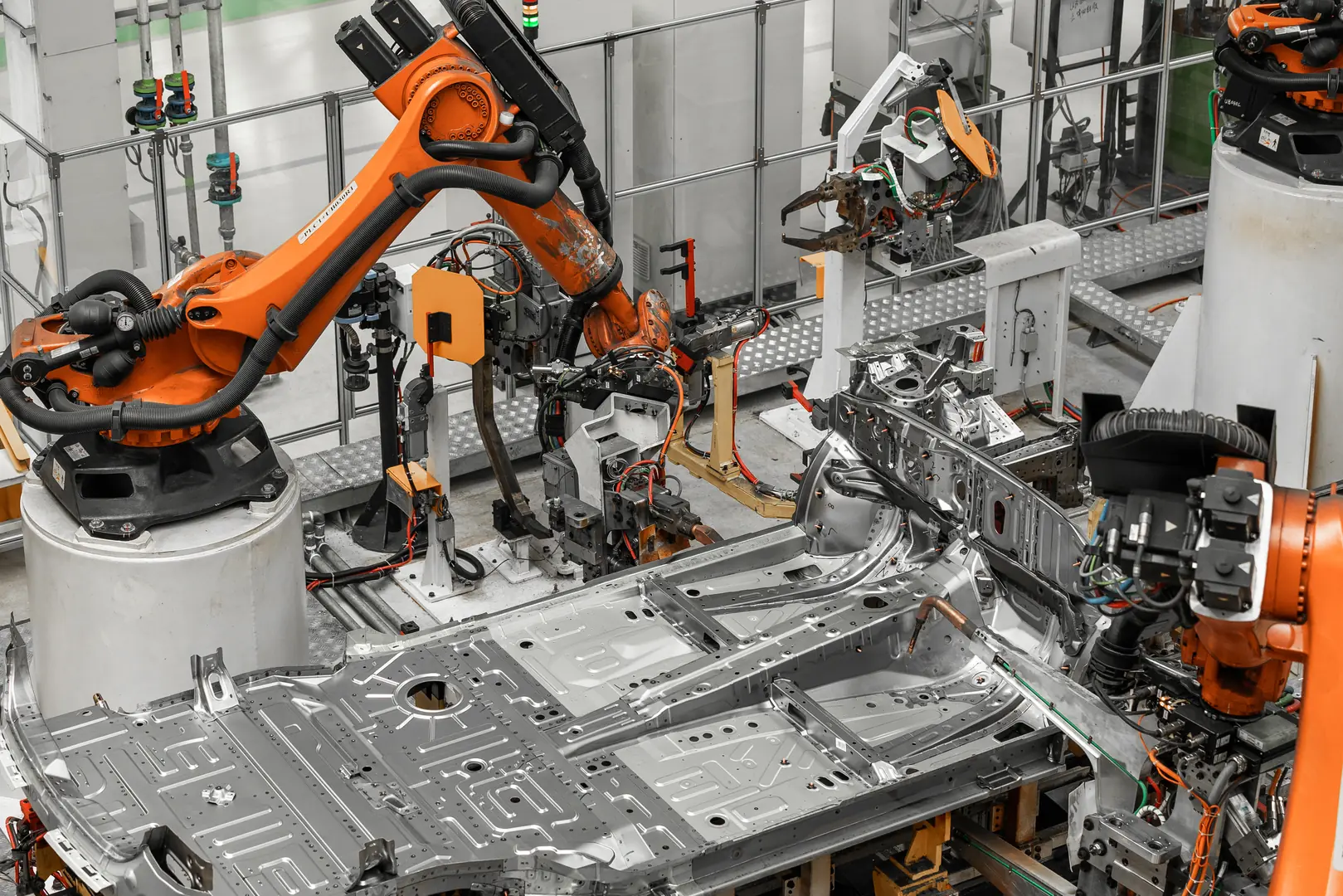
Overcoming these challenges isn't about finding a magic bullet. It's about implementing a robust sourcing and verification process. This transforms material procurement from a simple transaction into a strategic advantage for your business.
The Power of a Strategic Sourcing Partner
Your supplier should be more than just a vendor; they should be a partner in your project's success. At MFY, our integrated supply chain—from raw materials to final coil and sheet production—gives us complete control over quality and traceability. A strategic partner can provide expert advice on grade selection, offer stable pricing and reliable delivery schedules, and provide the bulletproof documentation you need. Instead of just taking an order, a true partner asks the right questions about the application to ensure you get the optimal material, not just the one you asked for. This collaborative approach de-risks your project and frees you up to focus on construction and installation.
Demanding Digital Transparency
Make digital documentation a mandatory part of your procurement process. Insist on receiving digital MTRs at the time of order, not just upon delivery. This allows your engineering team to verify compliance and specifications well in advance. This simple step can prevent massive headaches and delays. This digital-first approach aligns with the future of the industry and demonstrates a commitment to quality and safety that your clients will value. It's a key part of MFY's vision to drive innovation in the global supply chain, using data to deliver not just steel, but confidence.
What are the key technical recommendations for using stainless steel in pressure environments?
The technical details of material use can be overwhelming. Overlooking them, however, can compromise the integrity of the entire project, leading to rework or, in the worst case, failure.
Key technical recommendations include selecting the correct grade for the specific corrosive and temperature environment, ensuring proper welding procedures are used to maintain corrosion resistance at the joints, and specifying an appropriate surface finish to mitigate contamination and improve long-term performance.
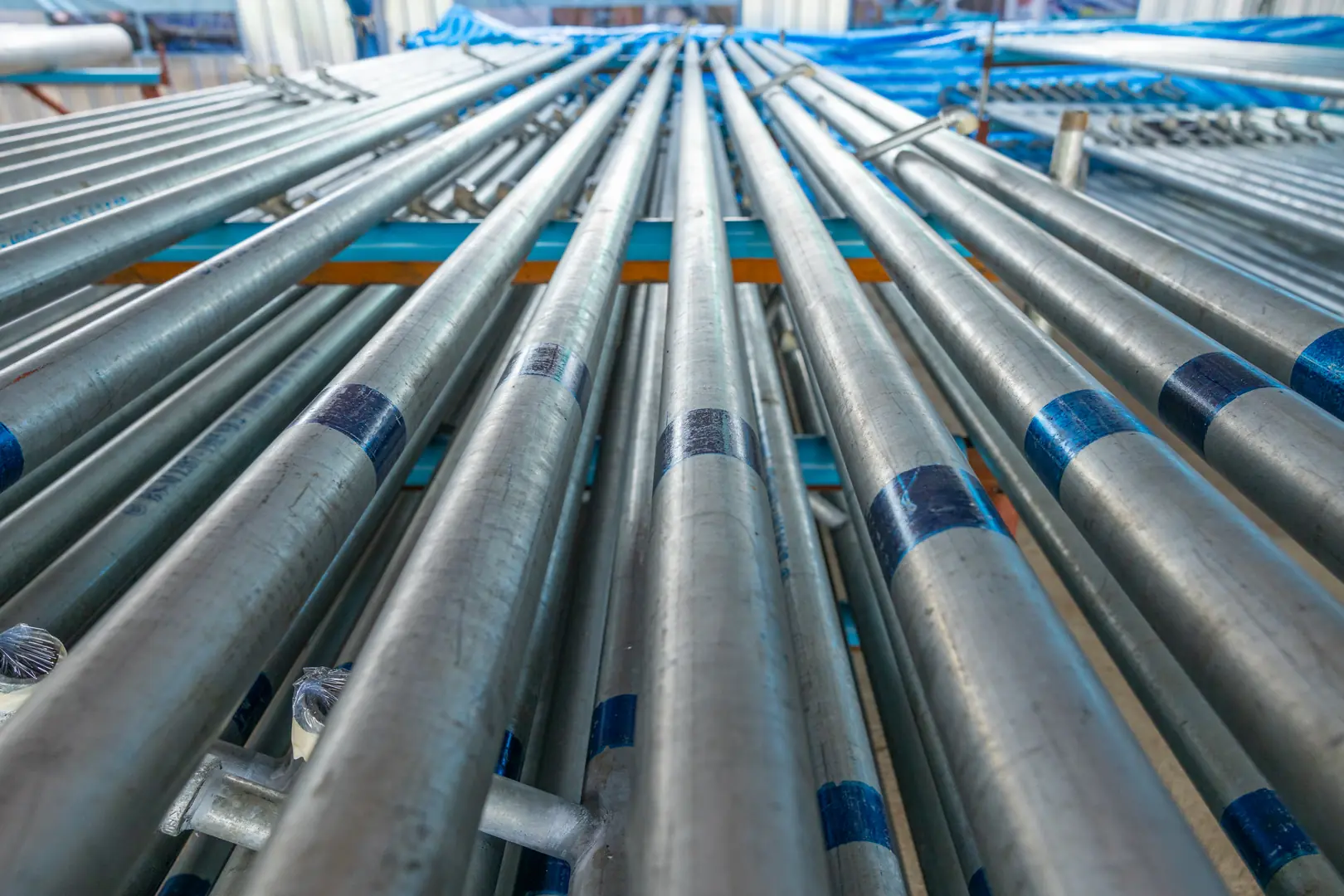
Getting the big picture right is important, but success in pressure applications often comes down to the technical details. As your partner, we believe in empowering contractors with the knowledge to make sound technical decisions that ensure a successful build.
Grade Selection: A Critical Decision
This is the most fundamental technical choice. Using the wrong grade is a recipe for failure. While a deep dive requires consulting with a metallurgist, contractors should have a strong working knowledge of the main families of stainless steel used in pressure applications.
| Grade | Environment | Key Consideration |
|---|---|---|
| 304L | General corrosion, freshwater, food products | Cost-effective choice for non-aggressive environments. |
| 316L | Chloride environments (seawater, de-icing salts), chemicals | Molybdenum content provides superior pitting resistance. |
| Duplex 2205 | High-pressure, high-chloride, high-stress environments | Offers double the strength of 316L, preventing stress corrosion cracking. |
Welding and Fabrication Best Practices
A pressure system is only as strong as its weakest link, which is often the weld. Improper welding can destroy the corrosion-resistant properties of stainless steel in the heat-affected zone, a phenomenon known as weld decay[^3]. It is crucial to use low-carbon "L" grades (like 304L or 316L), employ the correct filler metals, and follow qualified welding procedures (WPS) to ensure the integrity of the entire structure. Investing in welder training and proper post-weld cleaning is not a cost—it's an insurance policy against premature failure.
Conclusion
Mastering stainless steel for pressure applications requires more than just buying a product. It demands a deep understanding of the material's properties, an awareness of key trends like digital traceability, and a strategic partnership with a knowledgeable supplier. This approach ensures safety, efficiency, and long-term project success.
Have Questions or Need More Information?
Get in touch with us for personalized assistance and expert advice.



